Survivors of Buchenwald Concentration CampThe photo below, taken by Margaret Burke-White after the liberation of Buchenwald, shows a group of unsmiling male inmates, who were privileged Communist political prisoners, lined up in front of a barbed wire fence in the camp. 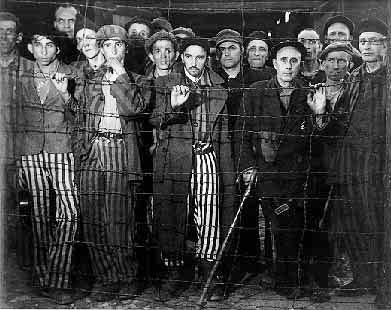 In the center of the photo above is a dapper-looking gentleman with a neatly trimmed moustache and short beard, wearing freshly-laundered striped prison pants, and what looks like a new wool overcoat. His expression is one of disdain, as though he can't wait for the picture taking to end, and the cigarettes and chocolate bars to be handed out. The rest of the prisoners in the picture, all of them clean shaven, including one elderly gentleman leaning on a cane, are looking at the camera as though they are puzzled by the sight of this self-assured woman, dressed in full Army regalia, who is standing behind a camera set upon a tripod, holding a flash fill-light. Margaret Bourke-White, America's most famous photographer, had been traveling with the Third Army and had accompanied the American soldiers when they crossed the Rhine. She arrived at Buchenwald on April 15, 1945, along with General George S. Patton. 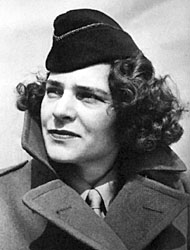 The photo below shows Buchenwald survivors who seem to be in good health in spite of the horrible conditions in the camp. The original caption on this photo read "Photograph of a barracks in the German prison camp at Weimar, Germany, shows the crowded living conditons of the prisoners. The building, which would normally house 50 people, was occupied by about 350. The camp was taken by troops of the U.S. Third Army." This photo, which is in the public domain, is kept at the National Archives and Records Administration in College Park, Maryland.  Buchenwald was a Class II concentration camp for political prisoners, who were mainly Communists. It was not a death camp where Jews were brought to be systematically killed. Buchenwald was for hard-core anti-Fascists who were considered more dangerous to the German state than the political prisoners sent to Dachau or Sachsenhausen, which were both designated as Class I camps. 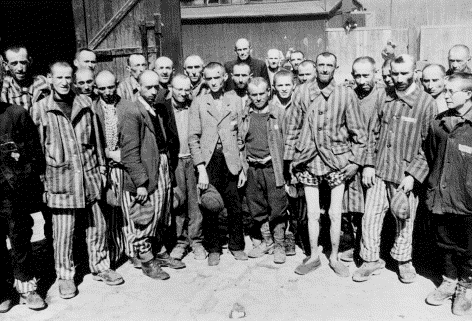 The quarantine camp, known as the "Small Camp" was a different story. This isolated camp at the bottom of the hill held the sick and the dying, who were mainly the Jewish and Romany prisoners who had recently arrived after being evacuated from the camps in the east.  In the first days after the liberation of Buchenwald, the political prisoners who had been freed by the Americans, hunted down 76 of the camp guards who had escaped into the surrounding woods, according to The Buchenwald Report. They were brought back to the camp and killed. According to Robert Abzug in his book "Inside the Vicious Heart," the inmates "killed almost eighty ex-guards and camp functionaries in the days following the liberation, sometimes with the aid and encouragement of Americans." In his book Abzug quotes one of the liberators, Fred Mercer: ... a German soldier attempted to surrender to the Americans, but was intercepted by a prisoner with a four-foot wood log: "He just stood there and beat him to death. He had to - of course, we didn't bother him." American newspaper reporter Marguerite Higgins wrote in her book "News is a Singular Thing," that 20 to 30 American soldiers took turns beating 6 young German guards to death at Buchenwald. Following the liberation of Buchenwald, the prisoners were moved to the SS barracks outside the camp. The opinion of the Americans, regarding the inmates, soon changed. Abzug wrote the following: The liberated prisoners themselves also bewildered innocent American onlookers. Despite what they knew about what their wards had undergone, some Americans never ceased to wonder why, even after food had been made readily abundant, the survivors pushed and shoved their way to the soup kettle or bread basket. Others were appalled to find some indifferent to nudity or personal cleanliness. Nor was it readily understood why many were slow to volunteer for work, even though it might help the condition of the camp. 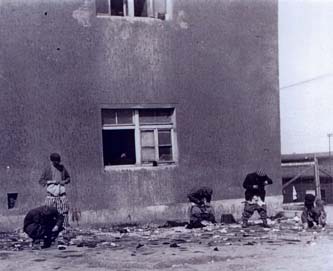 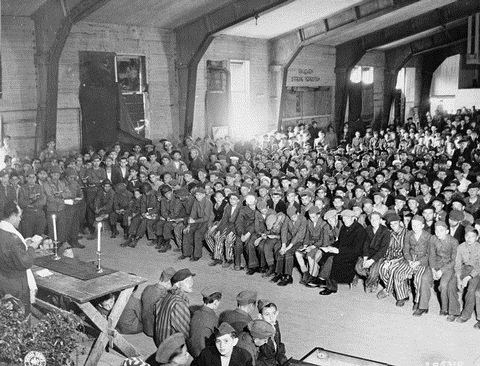 Buchenwald was not set up as a camp for Jews, but there were 4,000 Jews among the 21,000 prisoners there when the camp was liberated. They had been brought to Buchenwald after the death camps in the East were abandoned. On November 10, 1938, following the pogrom in Germany and Austria known as Kristallnacht, there were around 10,000 Jewish men brought to Buchenwald. They were released around two weeks later after promising to leave Germany or Austria within six months. General Patton at BuchenwaldBuchenwald OrphansOld photos of BuchenwaldCongressmen & ReportersEdward R. Murrow ReportLiberation ClaimsLiberation DayFirst liberators arriveGerman civilians tour BuchenwaldExhibits put up by prisonersMore exhibits at BuchenwaldBack to Buchenwald liberationHomeThis page was last updated on November 14, 2009 |